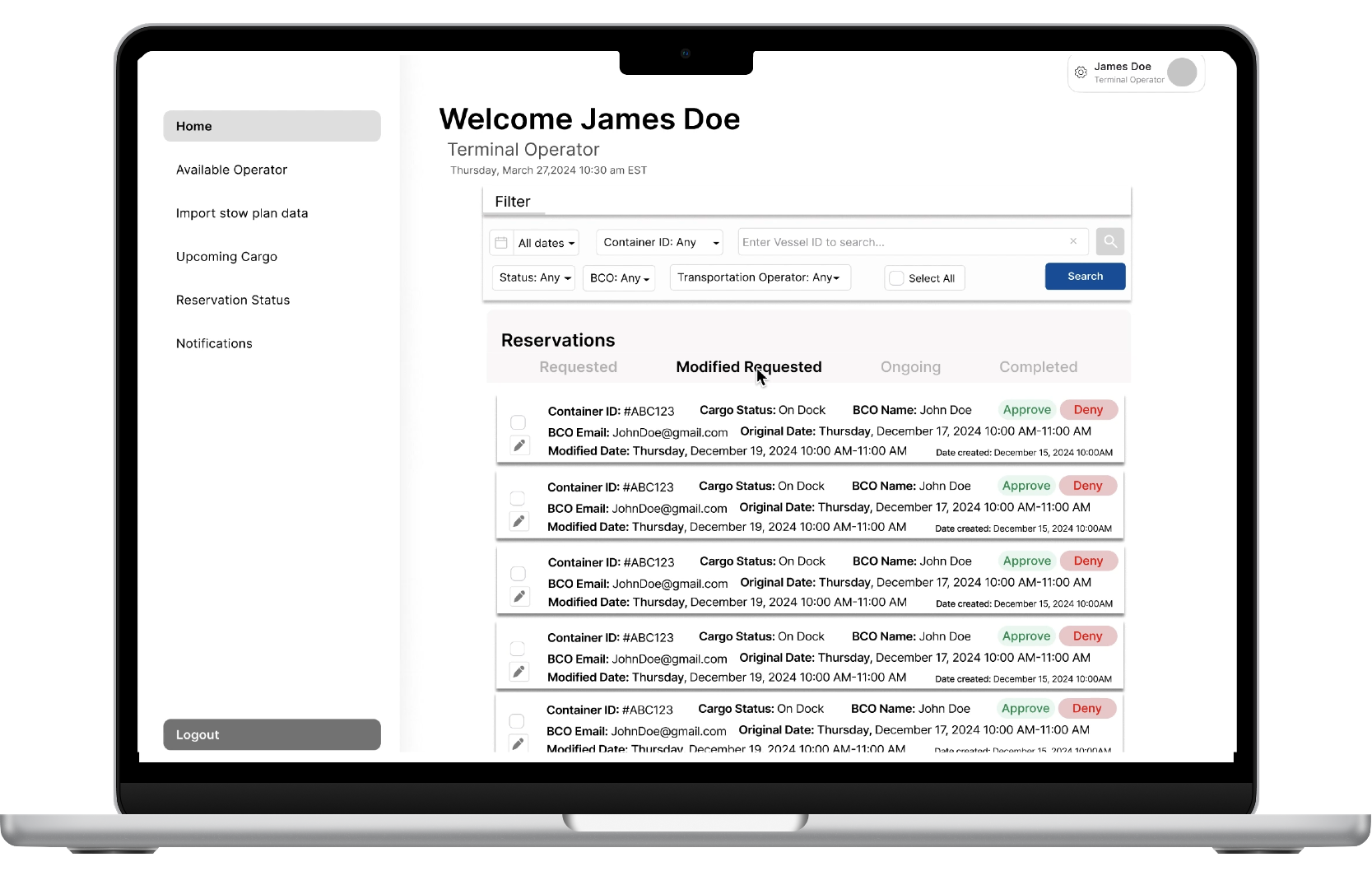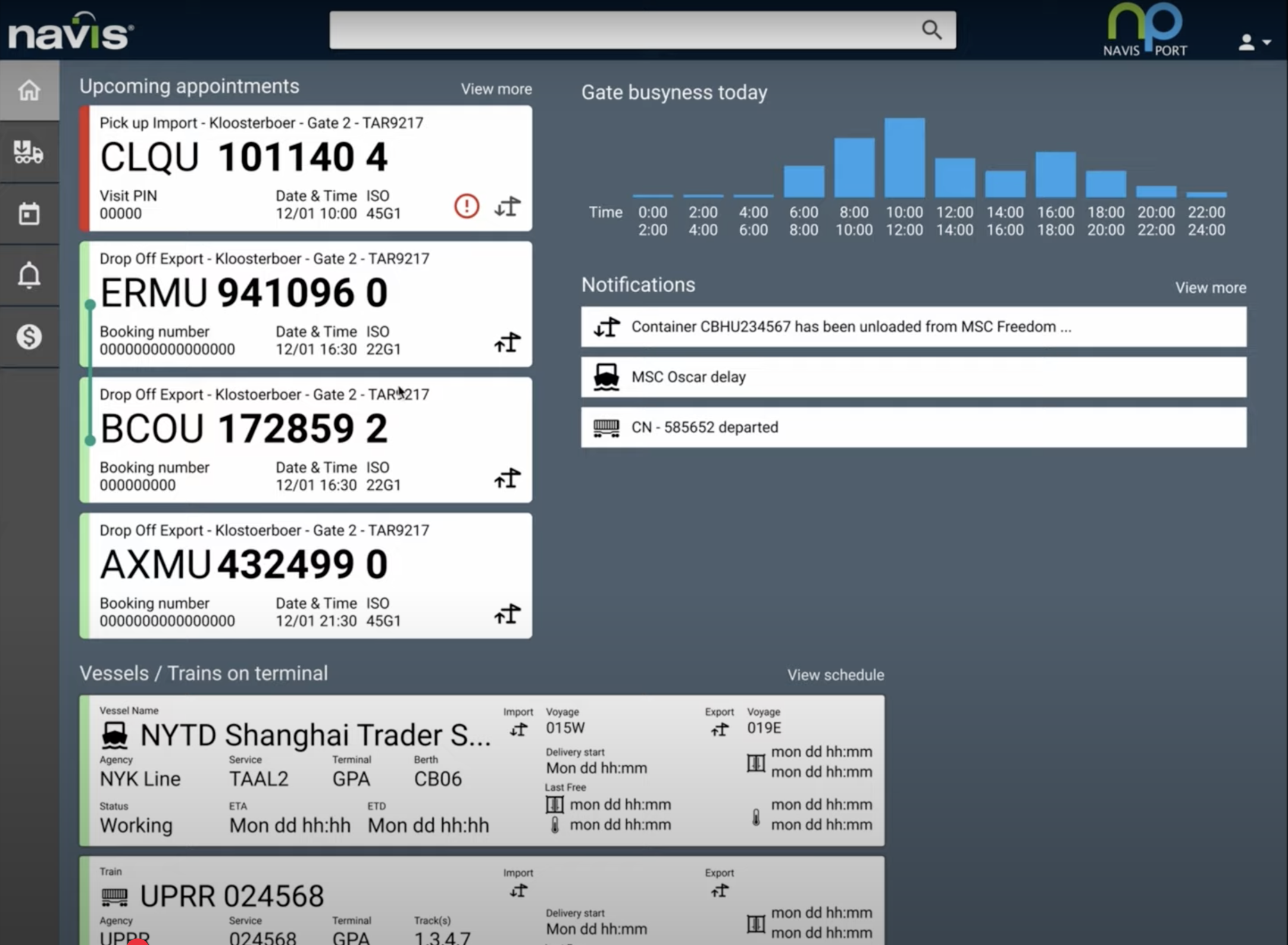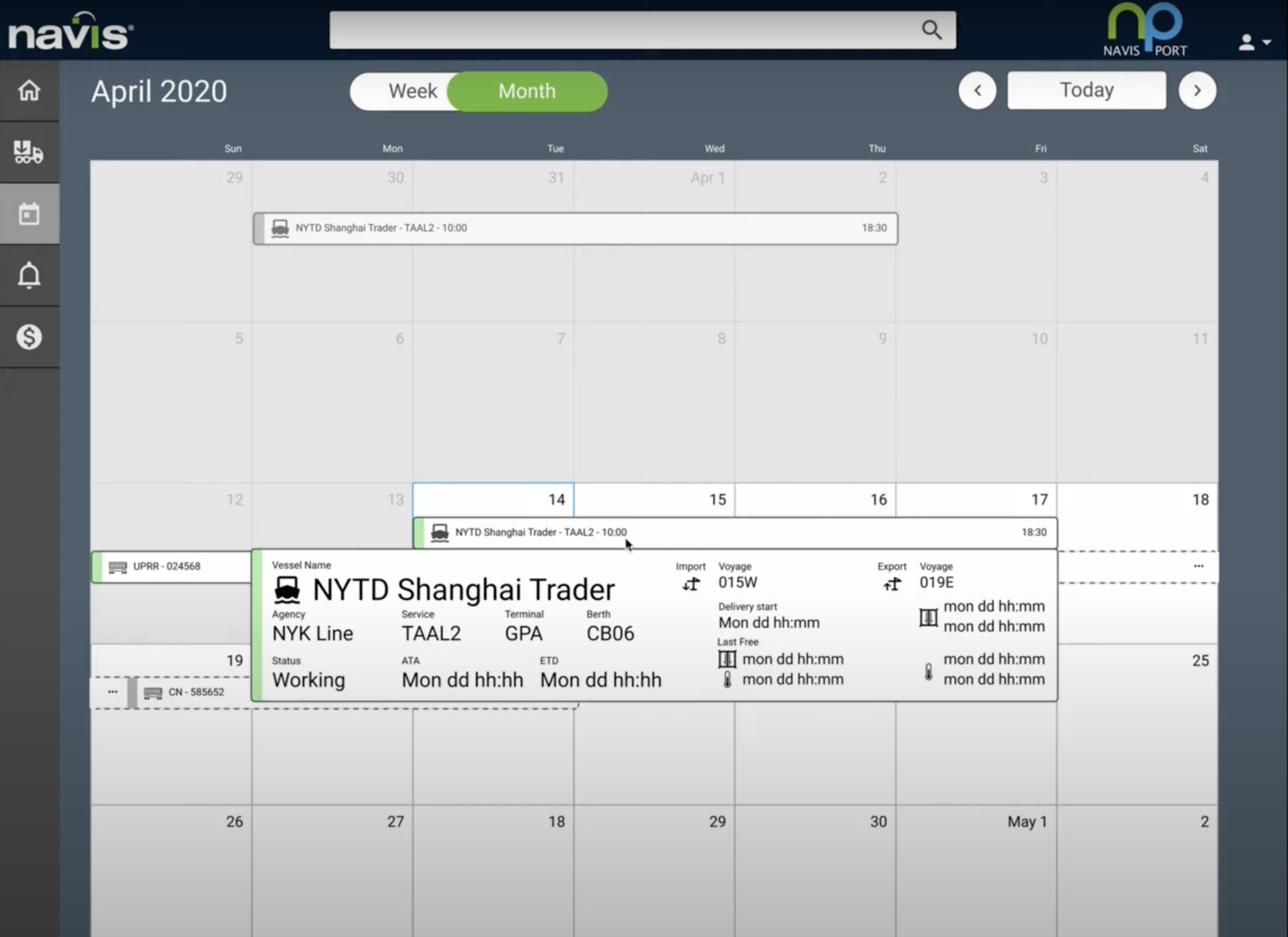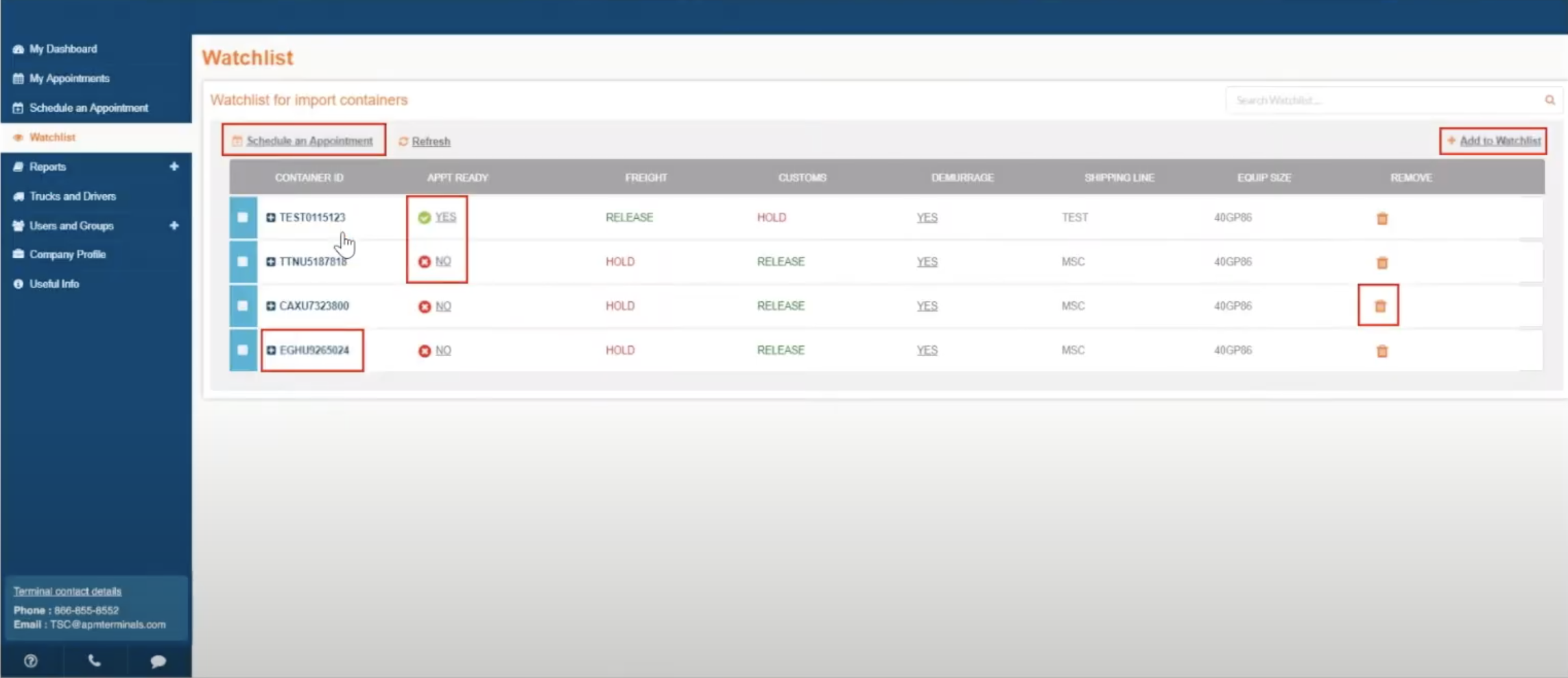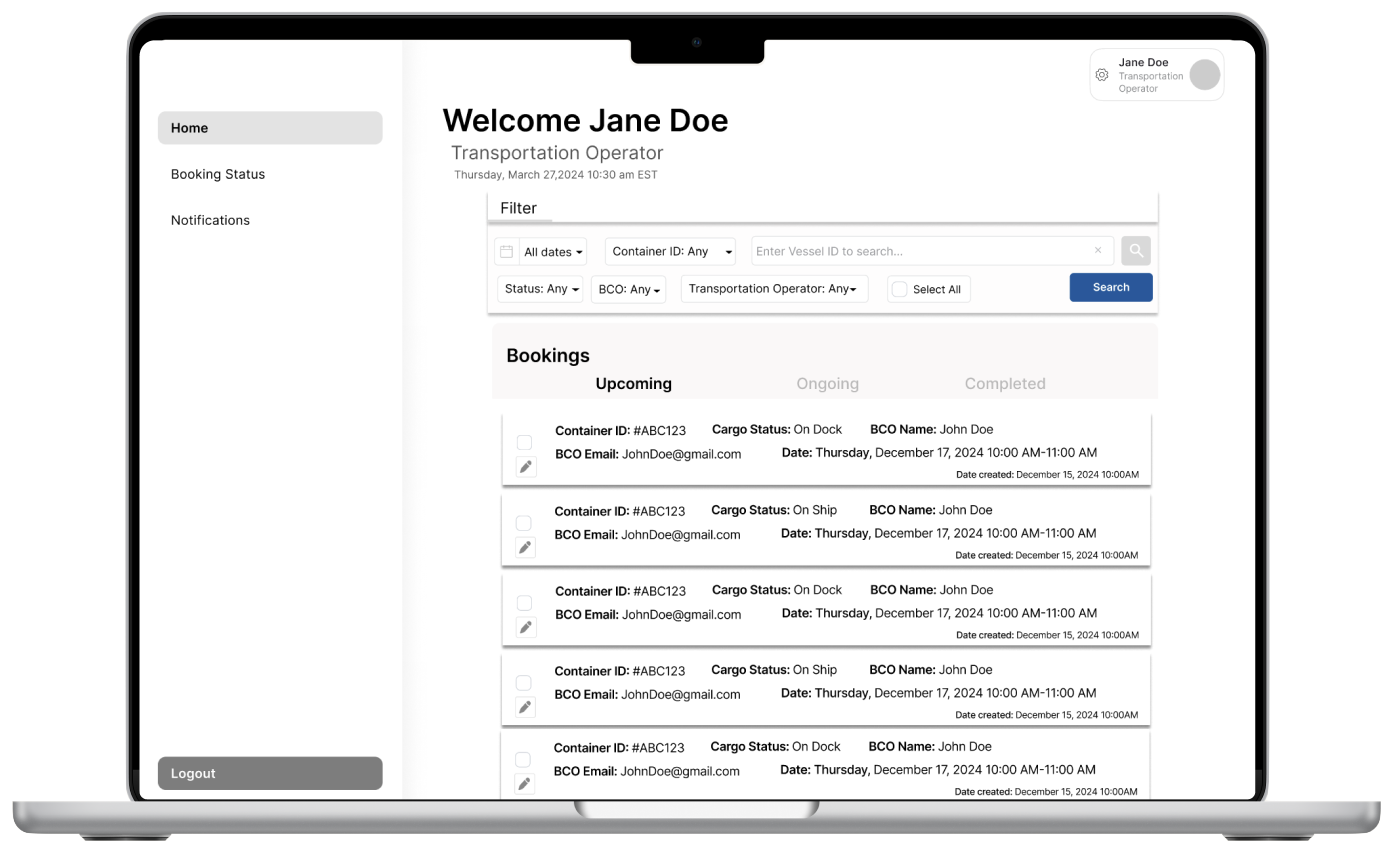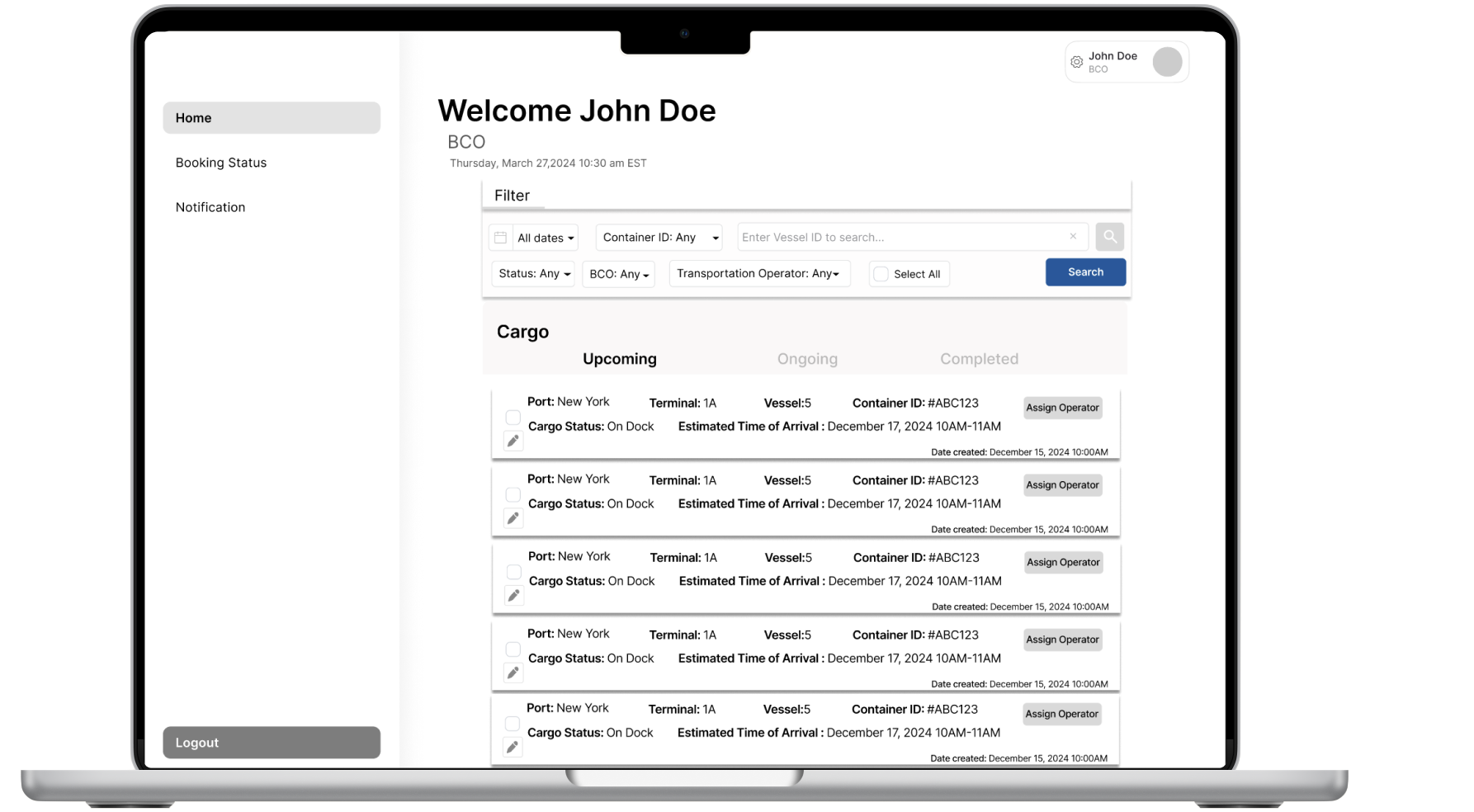Project overview
The Port Community Information System (PCIS) is a multi-persona desktop interface designed to streamline port operations. It provides tailored dashboards for Terminal Operators, Transportation Operators, and Beneficial Cargo Owners (BCOs), enabling efficient cargo management and real-time communication.
